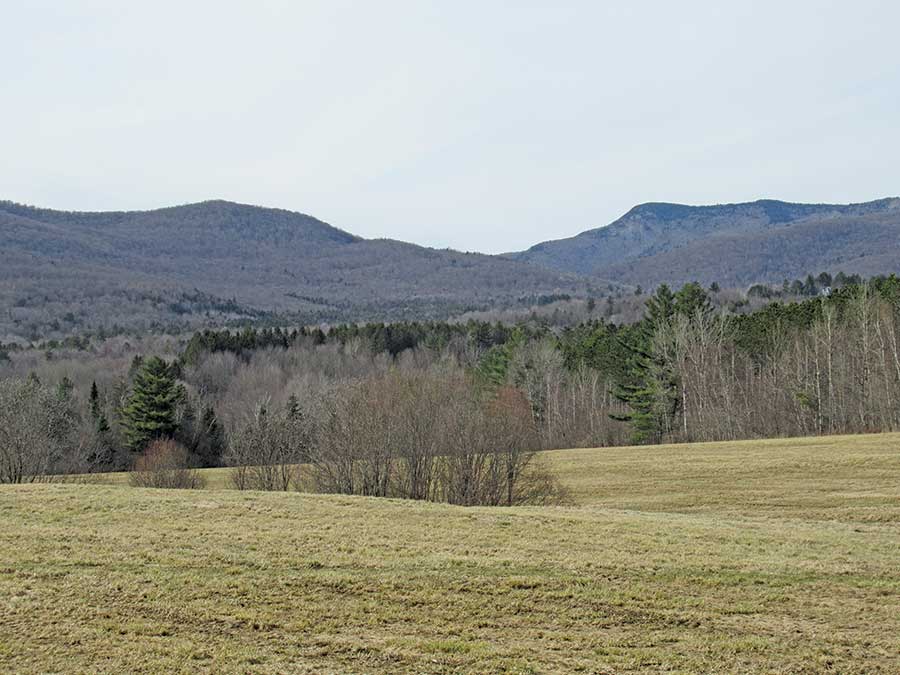If you can’t stand the heat: Lamoille County deemed safest from climate change
There are 329.5 million people in the United States, spread out over 3,000 counties in distributions running the gamut from the 64 people calling Loving County, Texas home, to the 10 million souls clamoring for space in Los Angeles County.
Imagine this scenario: 30 years from now, as extreme climate change has rendered vast parts of America all but uninhabitable, all eyes might be upon a humble, cross-shaped region in northern Vermont.
According to a report published two years ago by ProPublica, Lamoille County might be statistically the safest place in the United States to avoid rising sea levels, raging wildfires, drastic crop depletion, extreme heat and humidity, and all the economic damages that come along with climate change.
“Our apartment flooded, so that was a wakeup call, I think. And we literally ran for the hills. We packed up our life and moved to Vermont.”
That was Liz Schroeter Courtney, a so-called “climigrant” who moved from Brooklyn following the devastation wrought by Hurricane Sandy in 2012, speaking on a recently-broadcast episode of the PBS show “Weathered.” The episode talks about how extreme climate change, if left unchecked, will likely drive people further north.
“Weathered” relies on the ProPublica report — based on data by the Rhodium Group that was also analyzed by the New York Times — ranking how U.S. counties might fare circa 2040-2060, using “compounding calamities” as its variables. They are heat, farm crop yields, sea level rise, “very large fires” and humidity, or “wet bulb” measurements, along with the overall economic impact of those calamities.
“Taken together, some parts of the U.S. will see a number of issues stack on top of one another — heat and humidity may make it harder to work outside, while the ocean continues to claim more coastal land,” the report explains.
Southern and southwest counties in general are poised to get hammered in the coming decades, even under only moderate climate change modeling.
When it all sugars off, under worst-case extreme climate change models, Beaufort County, S.C., will statistically be the least safe place to live in America, notable largely for its projected extremely humid heat. According to ProPublica, wet bulb is a key indicator of how safe a place is with extreme climate change.
“When heat meets excessive humidity, the body can no longer cool itself by sweating. That combination creates wet bulb temperatures, where 82 degrees can feel like southern Alabama on its hottest day, making it dangerous to work outdoors and for children to play school sports,” the ProPublica report notes. “As wet bulb temperatures increase even higher, so will the risk of heat stroke — and even death.”
Also near the bottom of the list are traditionally dry, hot places, such as Pinal County, Ariz., which could see fully half the year stay above 95 degrees.
On the other extreme, there’s little Lamoille County. The statistically safest county in the U.S. is so climate change-resistant, it is projected to see slight overall economic benefits.
It is something of a hair-splitting exercise to award Lamoille safest-county status, since Vermont is overall a good bet for climate change refugees, with five other Vermont counties in the top 10.
Chittenden County is the state’s least safe, because of the projected high humidity 20-30 years from now, but still within the safest 100 U.S. counties — remember, there are over 3,000 of them.
That’s great news, at least for those who already live here. For the rest, regional planners are looking far ahead and anticipating the impact of endless throngs looking to move to the Green Mountains.
Tasha Wallis, executive director of the Lamoille County Planning Commission, explained on the “Weathered” episode that there is a housing shortage in Vermont and some smaller towns and villages don’t have the water or wastewater capacity to develop a lot of housing.
“We have a lot of work to do to be ready,” Wallis said. “We’re spending a lot of time looking at how we will manage with a lot more people coming here, because we do anticipate that.”
Courtney, who also works at the regional planning commission, said she is very aware how privileged she was to be able to just pack up and leave Brooklyn. It’s not easy for refugees from other countries to get out, and it might not be easy for all Americans to simply migrate north to avoid the heat.
“When I do think of myself as a climigrant, I say that very lightly. Because I was not fleeing famine, I was not fleeing war,” Courtney said. “I didn’t have to walk with just the clothes on my back and my family across an international border. I didn’t have to live in a detention camp. I just got in my Toyota, and I drove up here.”
Tommy Gardner is the news editor for the News and Citizen and Stowe Reporter.



